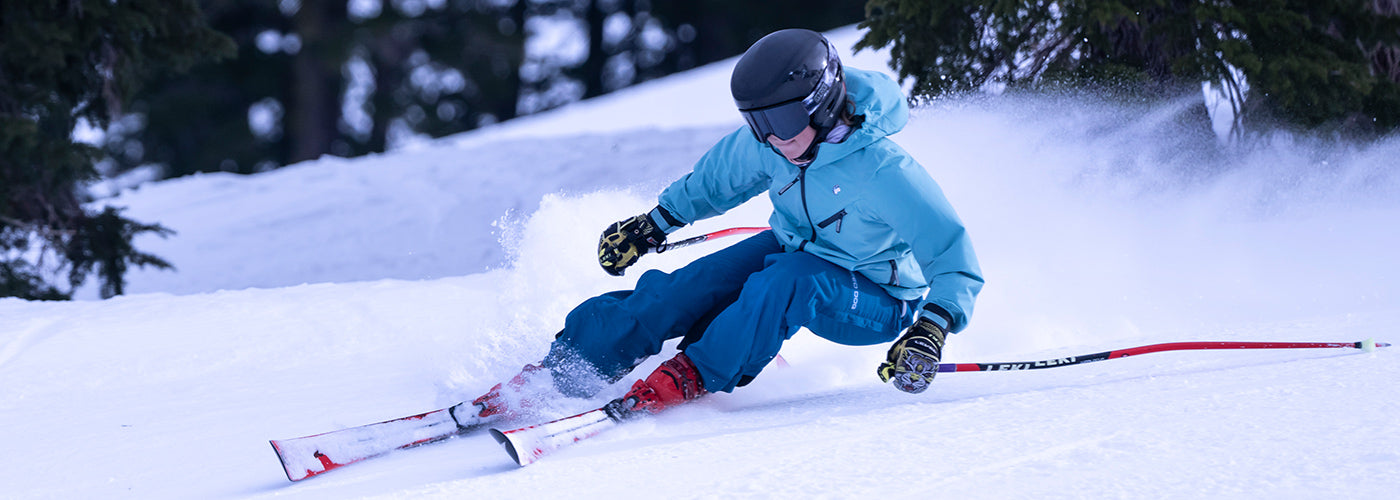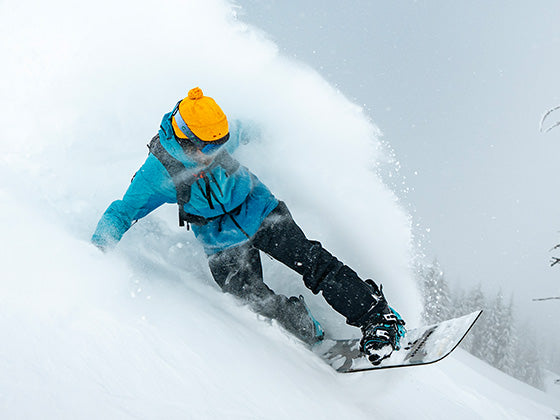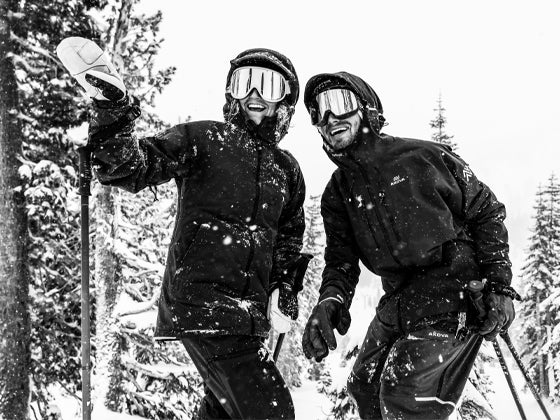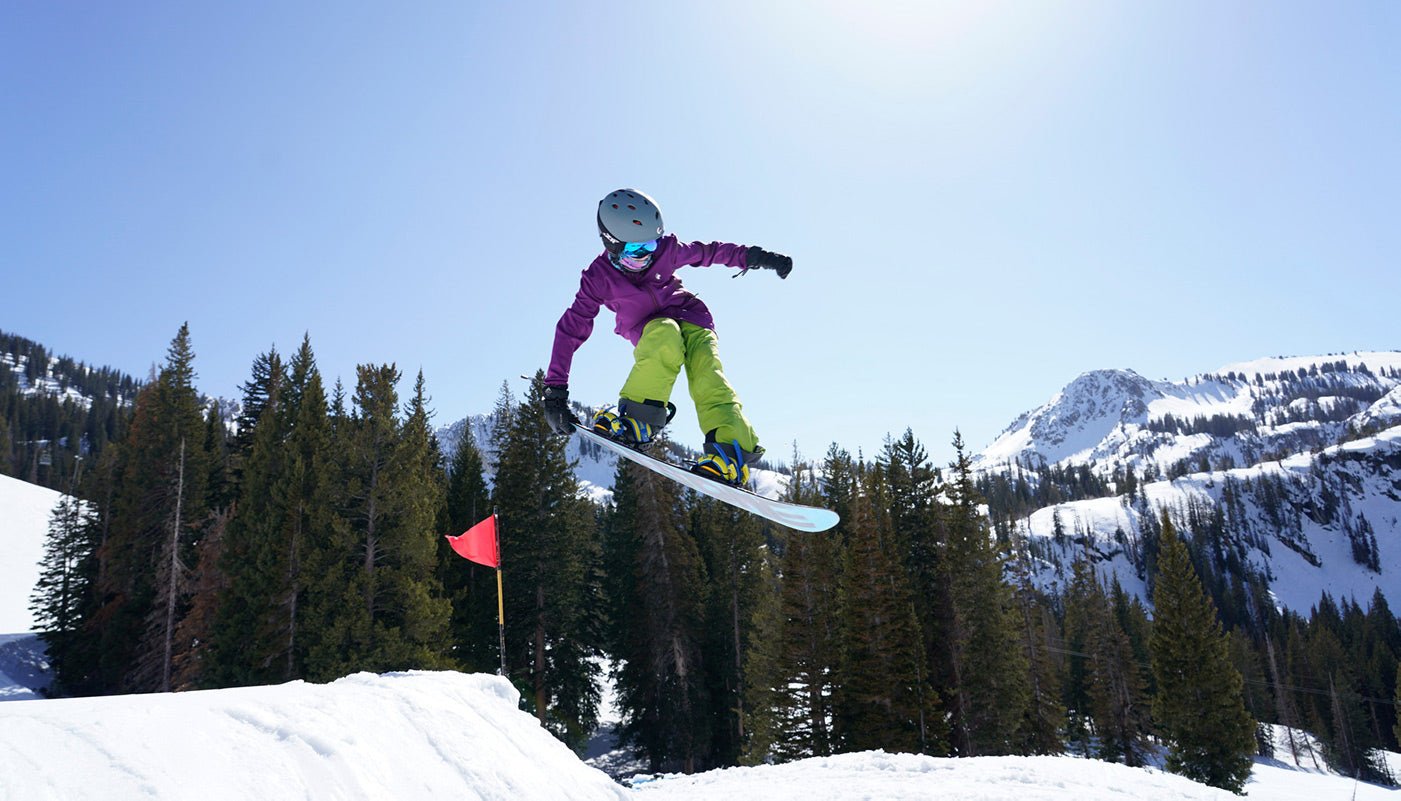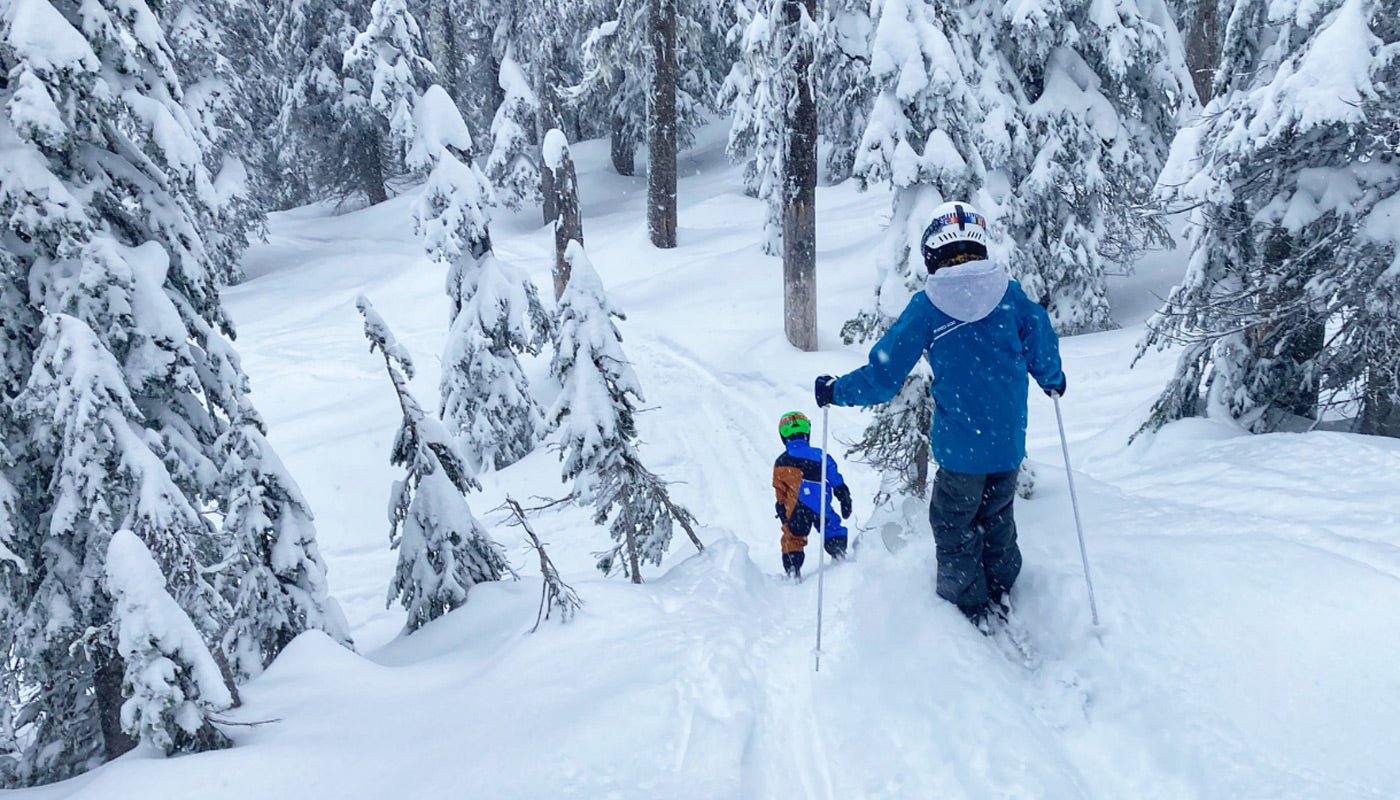WELCOME TO SAFETY ON THE SLOPES: A 3-PART GUEST SERIES FROM RAISING LITTLE RIPPERS
Raising Little Rippers is a blog and set of online educational resources created by 22-yr ski instructor and mom, Janelle Thomas. We are partnering with her to bring you some of her sage advice and invite you to learn more with her online course to help kids stay safe on the hill (see below for more info).
PART 2: CREATING HABITS TO AVOID COLLISIONS

Ask any parent what one risk makes them the most nervous when they think of riding with their child at their local resort and they will most likely say Tree Wells. I get it, and understanding tree wells is very important as kids start venturing into the glades (see Part 1 of this series in case you missed it).
But do you know that the majority of injuries and fatalities at ski resorts actually occur on blue, groomed runs, when a rider collides with other riders, the snow surface or trees? Which makes avoiding collisions one of the most important safety topics we should be discussing with our lil’ rippers. Before we get all doom and gloom, let’s remember that your chance of dying while skiing or snowboarding is extremely low. Statistically speaking, you are more likely to die swimming or cycling than you are riding down the slopes. In fact, your chances of dying with your boots on at a ski resort are less than one in a million.
That being said, risks do exist. According to the National Ski Areas Association (NSAA), over the last decade the United States averages 40 deaths per year, from skiing and snowboarding. Luckily, we can teach our lil’ rippers to mitigate these risks by introducing and modeling good hill habits.
Are you raising boys? Hate to break it to ya, but you may have the biggest responsibility to introduce good hill habits to keep them, and others, safe as they grow into big rippers. Resort fatalities are predominantly males (85%) ranging in age from their late teens to late 30’s (70%).
What They Should Wear
Helmets are a must-have safety tool that we never go without. Wear a helmet, make it a habit, but understand that its purpose is limited. Your helmet is designed to withstand speeds of 12mph. A skier or snowboarder who collides with another rider, the snow surface or a tree, is typically going 25 to 40 mph. I don’t suggest bubble-wrapping our children but lil’ rippers who have an increased risk of hard impacts to the spine like beginners, off piste jumpers, park riders and speedsters may want to add a back protector to their gear list. Shock absorbing back protectors provide added protection to the backbone and vertebrae.
What They Need To Know: The 4 Hill Habits
Telling our lil rippers to “avoid collisions'' can seem like such an obvious direction but it really is an umbrella statement. There are a variety of scenarios, throughout a day of riding, that require specific behaviors to keep us safe from collisions. My best advice is to start teaching good hill habits when they are young and make sure the conversation is ongoing as they grow.
Enjoy riding with your child and seek relevant moments to model and teach the 4 hill habits I cover below.
1. Look Uphill Often
Make it a habit to always look uphill before...- Merging with OR crossing another run
- Initiating a traverse OR long turn across the hill
- Popping out of the tree’s onto a groomed run (use a spotter)
- Hitting a jump OR dropping a cliff (use a spotter)
Teach your lil’ ripper to look over their shoulder and uphill often. Always be modeling the behaviors above. When they are young add visual and verbal cues to help them learn the action. Like pointing up the hill (visual) as you announce, “OK, I’m going to look uphill before I cross this run” (verbal). Be consistent and these habits will become second nature. Eventually the conversation will turn towards their latest trick and how they want to hit a jump or pop out of the trees, most likely both at the same time. This is when you will find yourself yelling “all clear,” as you model how to safely spot your ride buddy. Make these habits a norm in your family and your lil’ ripper will be more likely to expect the same from future riding buddies (ie. friends).
***Ride along with the Whitefish Freestyle Team and watch how they use a spotter to navigate a jump along a steep slope.
2. Stop Wisely
I was traveling down an intermediate groomed run one day, carving nice long sweeping turns with my entire family. We were all riding in control and going the right speed for the terrain but as we rode up and over a rolling hill, sitting just low enough on the downhill side that we couldn’t see them from above, we suddenly found four snowboarders, all SITTING right in the middle of the run. They made a line extending at least 40’-50’ across the middle of the hill. There was barely room to get around them. They had created one long, unexpected obstacle, suddenly appearing just a few feet in front of us. It seems they had not been taught one of the cardinal rules of riding… ALWAYS STOP ON THE SIDE OF THE RUN! Lucky for them, we were all in control and able to stop or turn away to avoid colliding with all of their spines.
Stopping on the ski hill can be compared to stopping your car on a highway. You MUST pull over when you park and stay out of the way of oncoming traffic. To avoid collisions with other cars… er, I mean riders…
- ALWAYS park on the side of the road (run)
- ALWAYS pull over where other cars (uphill riders) can see you
- ALWAYS stop at a red light (entrance to the lift line)
- NEVER park your car directly under a swing set (chairlift)
- ALWAYS move your car (self) before you get a parking ticket (ie. get up and out of the way quickly if you crash where you shouldn’t be parked).

3. Give The Right Of Way
This rule is often one of the hardest to adhere to. Make sure your lil’ ripper understands that to “give the right of way” means that it is THEIR responsibility to avoid the riders ahead of them, not the other way around.
Even if that person is out of control, it is your job as the rider in the back (uphill) to be able to react to what happens in front of you. A child can easily make the assumption that the riders ahead of them automatically know they are there. Remind them that when their back is turned they can not see the people behind them. With helmets, helmet liners and headphones, most riders can’t hear them coming either.
To give the right of way...- Be prepared for the riders in front of you to stop, crash or turn into your path at any moment.
- Remain at least 15 feet away from other riders in every direction.
- Slow down around slow signs to be ready to give the right of way in congested areas.
4. Announce Your Overtake
This is a BIG one! When jetting down the mountain, overtaking another rider without alerting them that you’re coming, is a sure way to increase your odds of a collision. Model and practice yelling out, “on your right!” OR “on your left!” when overtaking each other or another rider on the mountain. If your lil’ ripper doesn’t know their right from their left, this is not the time to teach them because when you overtake another rider you want to yell out the side you are passing on for them… not yourself. This can be a bit confusing at first but, with a little bit of practice, announcing your overtake quickly becomes a habit. For younger riders keep it simple. Teach them to yell out, “passing!” or “here I come!” as they approach and pass others. As your lil’ ripper gets older, work towards being more directional. Even “right side!” or “left side!” can simplify the verbiage while helping the rider they are overtaking choose a better course of direction.
Practice makes perfect and I find the more you practice this one the more naturally it slips out of your mouth. So model it always and play with it often. Consider it common courtesy and a habit that could save a life!
***Here’s what calling your overtake looks like. Practice. Make it a habit.
Dedication / In Memoriam

WANT TO LEARN MORE ABOUT SAFETY OR SHRED DOG GEAR?
Check out Part 1 or Part 3 of this series and visit Raising Little Rippers to read Coach Nelly's SHRED DOG gear review.
ABOUT THE AUTHOR

Janelle Thomas (Coach Nelly) is the owner of Raising Little Rippers and mother of three. With a degree in Behavioral Psychology and a specialty in child development, Janelle graduated from the University of Portland with honors and a desire to pursue adventure therapy. She went on to spend the next 22 years perfecting the art of teaching children to ski while simultaneously homeschooling and raising her own three lil’ rippers. From Instructor to Trainer to Program Director she brings decades of experience to her current coaching project: To empower adventurous mamas raising the next generation of big mountain skiers. Find her on Instagram @raisinglittlerippers.
